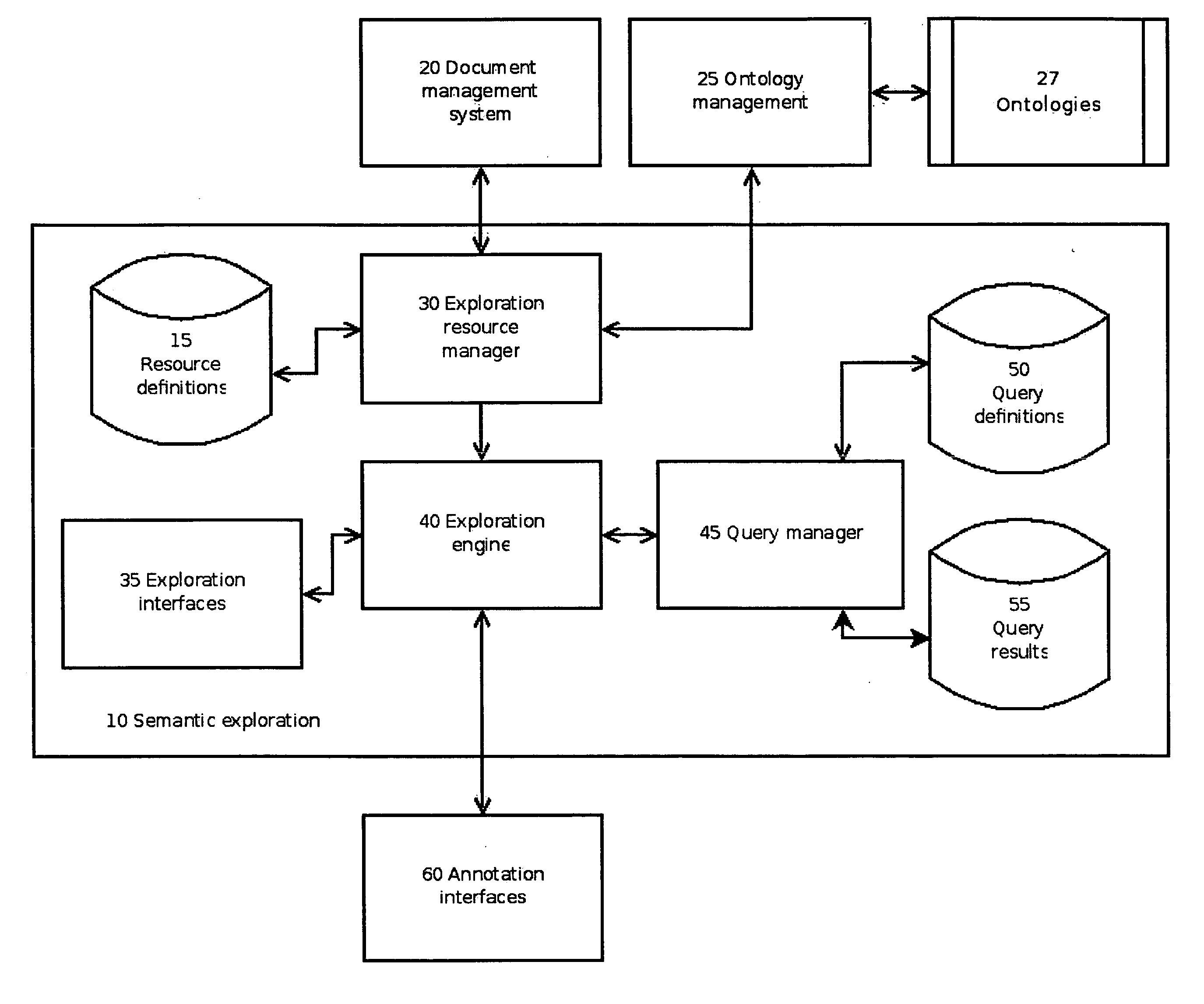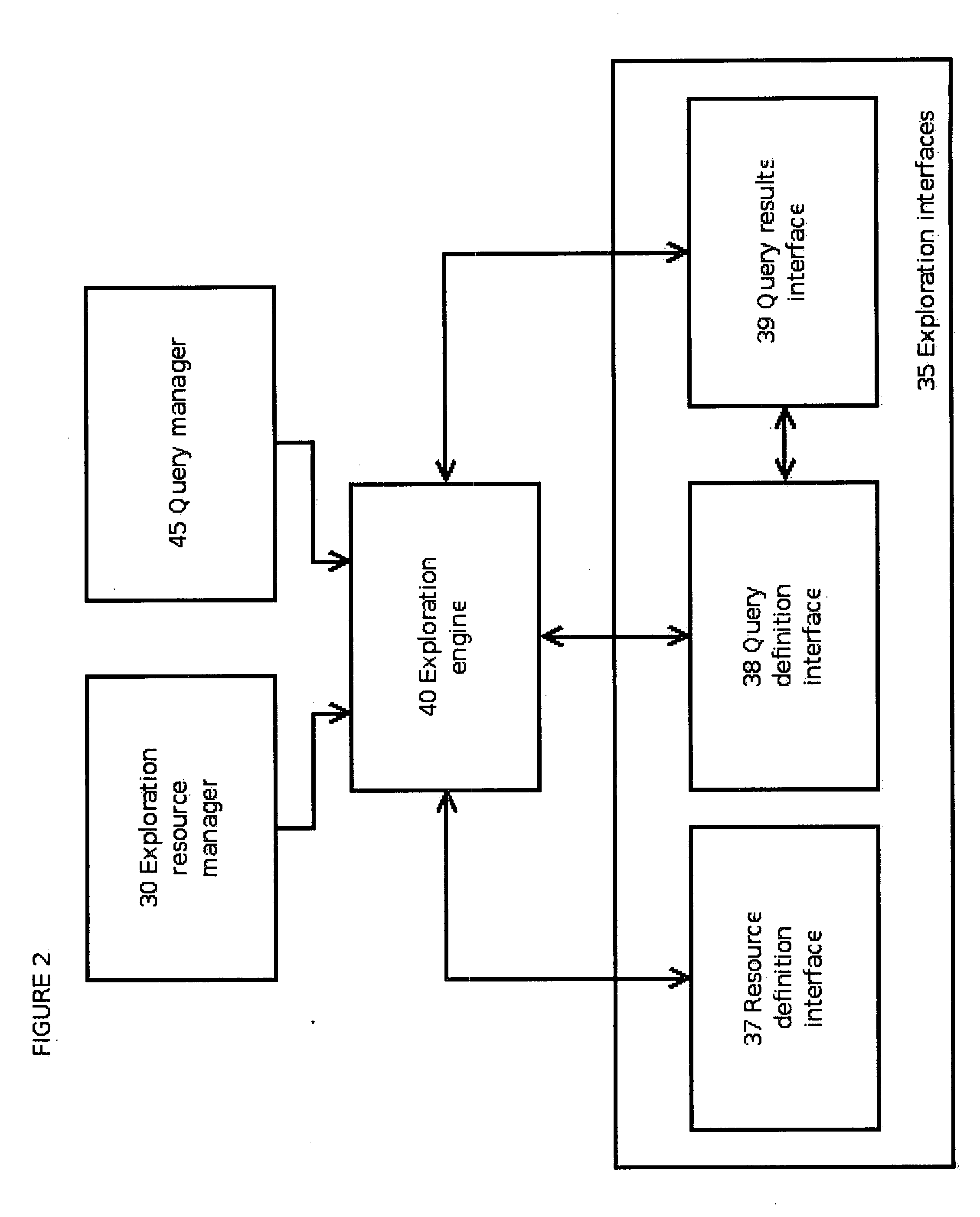Semantic exploration and discovery
a semantic exploration and discovery technology, applied in the field of semantic exploration and discovery, can solve the problems of large domain knowledge and specialized expertise, high cost and time-consuming, and both approaches are expensive and time-consuming
- Summary
- Abstract
- Description
- Claims
- Application Information
AI Technical Summary
Problems solved by technology
Method used
Image
Examples
Embodiment Construction
[0051] The present disclosure will now be described more fully with reference to the Figures in which an embodiment of the present disclosure is shown. The subject matter of this disclosure may, however, be embodied in many different forms and should not be construed as being limited to the embodiments set forth herein.
[0052] The semantic discovery and exploration (SED) system according to the present invention provides a suite of closely allied computational techniques that require minimal user input and data organization to perform search, navigation, categorization, clustering and identifying related terms. These techniques can directly exploit structured knowledge bases, if they are available.
[0053] These techniques also exploit semi-structured knowledge sources such as dictionaries, encyclopedias, manuals, and other reference works that provide some semantic structure. For example, an encyclopedia is organized by entry. Each entry has a name (its “headword”) and sometimes syn...
PUM
 Login to View More
Login to View More Abstract
Description
Claims
Application Information
 Login to View More
Login to View More - R&D
- Intellectual Property
- Life Sciences
- Materials
- Tech Scout
- Unparalleled Data Quality
- Higher Quality Content
- 60% Fewer Hallucinations
Browse by: Latest US Patents, China's latest patents, Technical Efficacy Thesaurus, Application Domain, Technology Topic, Popular Technical Reports.
© 2025 PatSnap. All rights reserved.Legal|Privacy policy|Modern Slavery Act Transparency Statement|Sitemap|About US| Contact US: help@patsnap.com



